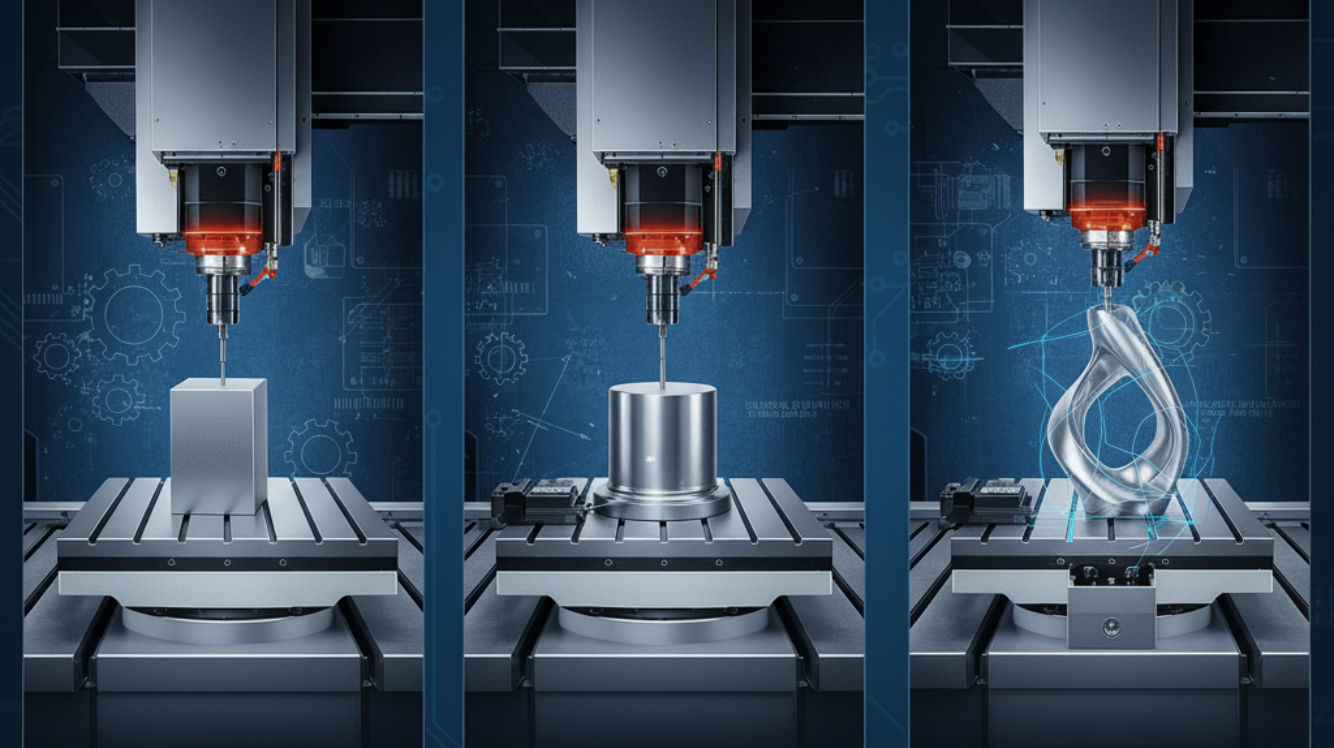
Table of Contents
Want to know an interesting fact? If you’ve ever wondered how the precise components of cars, airplanes, or even smartphones are made, chances are a vertical machining center (VMC) was involved. If we put it simply, a VMC is a CNC (Computer Numerical Control) machine where the spindle is vertically oriented. This design is what helps and allows manufacturers to drill, mill, and tap components with high precision.
At the heart of modern manufacturing, VMCs give you speed, accuracy, and versatility. Here at FANUC, we provide a range of solutions. With years of service, our machines have proved to be reliable for industries such as automotive, aerospace, electronics, and more!
In this article, that’s all we will be talking about, including what is vmc machine. We will break down the types of VMC machines, explore their uses, compare them, and guide you on how to pick the right VMC for your operations. Not only these, but we will also tell you about mini VMC machines (which are great for small spaces), and so much more. By the end of it, you will have a clear picture of the VMC machine working and its value in modern manufacturing.
VMCs are primarily classified based on the number of axes they operate on. So here is a simple breakdown for you to know them a little deeper:
You can think of a 3-axis vertical machining center as the most straightforward and widely used version of a VMC. As its name suggests, it moves in three directions. These directions are: X (side to side), Y (front to back), and Z (up and down). And because it covers the major directions, it is usually enough for standard milling, drilling, and cutting work.
So if your job involves making parts that are mostly flat and do not need too much contouring, then this type of VMC does the job beautifully. Plus, it is reliable, easy to maintain, and affordable. This is why you will find it in almost every manufacturing setup.
Now, a 4-axis VMC adds a twist, quite literally. Along with the usual X, Y, and Z movement, it introduces rotation around one axis (commonly called the A-axis). This small addition literally changes everything!
With this, you can now work on multiple sides of a component without constantly unclamping and repositioning it. So how does it benefit you? Well, it saves time, reduces setup errors, and opens up possibilities for machining curved or angled surfaces. If you are someone who works with parts that need work from different angles, then this is where a 4-axis machine will get the job done. It's simple and flexible!
Then comes the big player, which is the 5-axis VMC. This machine can move along all three linear axes and also rotate and tilt around two more. In simple words, this one can reach almost any part of the workpiece from different angles, that too, in a single go! Sounds futuristic, much? But it's happening already!
It's usually a favorite for those in industries like aerospace and automotive. Reason being, for them, precision and surface finish are non-negotiables. And since it reduces the need for repositioning, it will actually save you hours of manual effort. So you can think of it as the true master, as it is highly capable, but, well, also demands quite a lot of investment and space.
Talking of space, not every workshop has space (or the budget) for massive industrial setups. That’s where the mini VMC machine fits in. These compact versions are smaller in size, but their precision and reliability won’t disappoint you.
They are ideal for small-scale industries and can also handle prototypes or small production runs quite efficiently. So, don’t let the size fool you, as it can still deliver pretty impressive accuracy if and when used right!
This is where you will understand the differences between these types of VMC machines, which can later on help you make an informed choice!
3-Axis VMC: X, Y, Z. Perfect for flat or simple 3D surfaces.
4-Axis VMC: Adds rotation, useful for angled cuts.
5-Axis VMC: Full rotation and tilt, ideal for complex 3D surfaces.
Mini VMC: Limited travel, best for small parts.
3-Axis: Accurate, but multiple setups may be needed for complex parts.
4-Axis: Reduces setups, improves overall workflow.
5-Axis: Offers the highest precision, can handle complex geometries in one go.
Mini VMC: Slightly lower speed but maintains precision for small-scale jobs.
3-Axis VMC: Most affordable.
4-Axis VMC: Moderate cost, but better for medium complexity tasks.
5-Axis VMC: Higher investment, but worth it for intricate parts.
Mini VMC: Budget-friendly for startups or educational use.
Now comes one of the most crucial decisions to take, which is to select the right CNC vertical machining center for your products. Here are some key factors to keep in mind when doing so:
So, what did we learn? VMC machines are at the core of modern manufacturing. From 3-axis machines that handle simple milling to 5-axis machines that can create intricate aerospace components, each type does its own magic. Even mini VMC machines play a big role if we talk about small-scale production and prototyping.
Next time, when you choose a CNC vertical machining center, you should consider the needs of your production, the complexity of the parts, the space you have, and, of course, the budget. And if you want all of these under one roof, then providers like FANUC India, who offer both high-quality machines and the support you need, will be a great choice!
In short, once you understand the types of VMC machine, their applications, and how VMC machines work, you can actually save time, reduce costs, and make sure you never compromise on precision. So, whether you are just upgrading your workshop or starting from scratch, there is always a VMC solution out there that fits your needs perfectly.
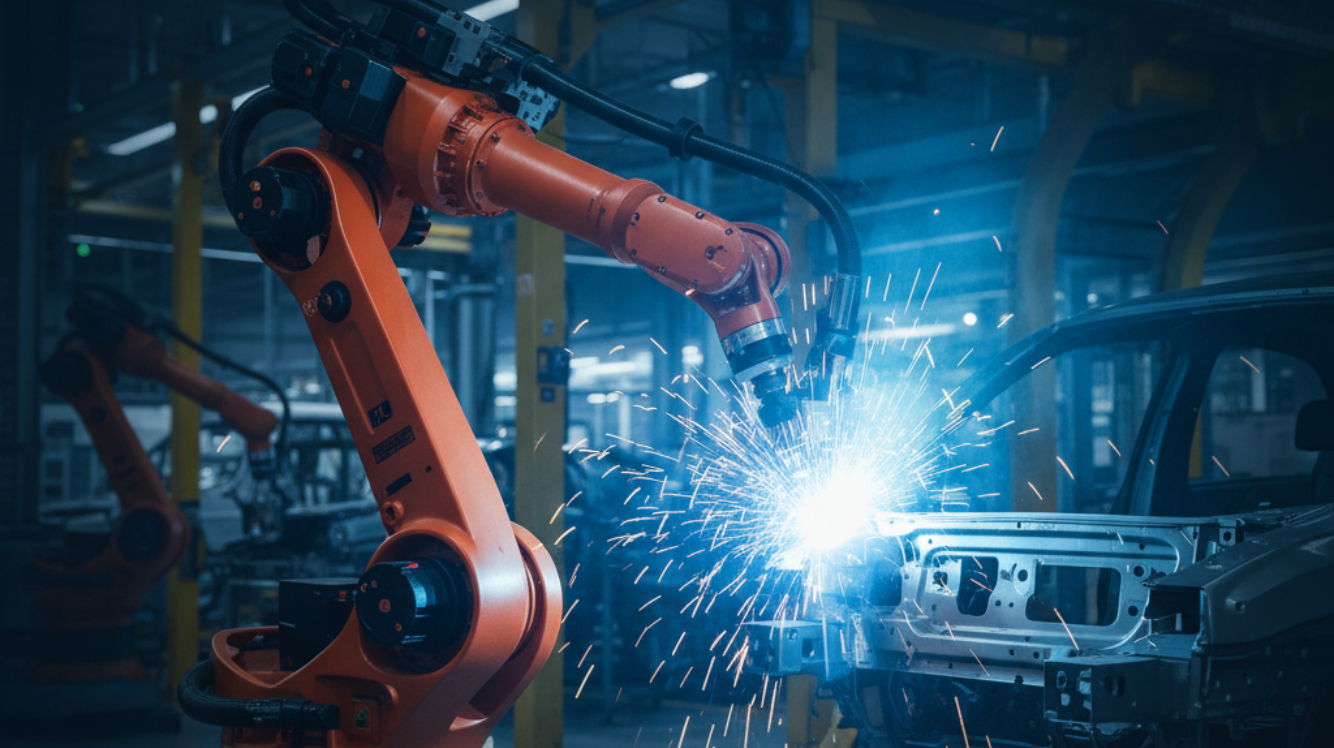
Understand the main types of industrial robots — articulated, SCARA, delta, and cobots. Learn their applications, advantages, and impact on modern manufacturing
Know More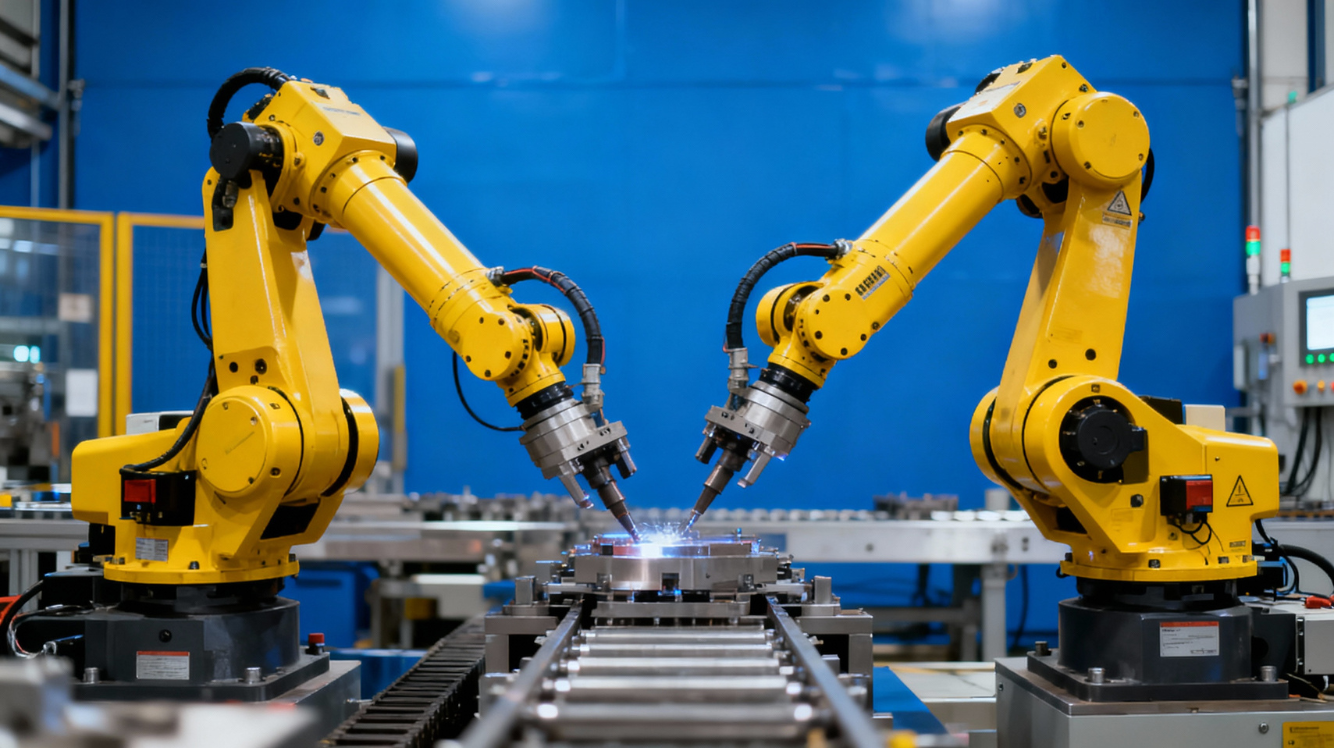
Learn the four main industrial automation types—fixed, programmable, flexible, and integrated—and how they transform modern manufacturing systems.
Know More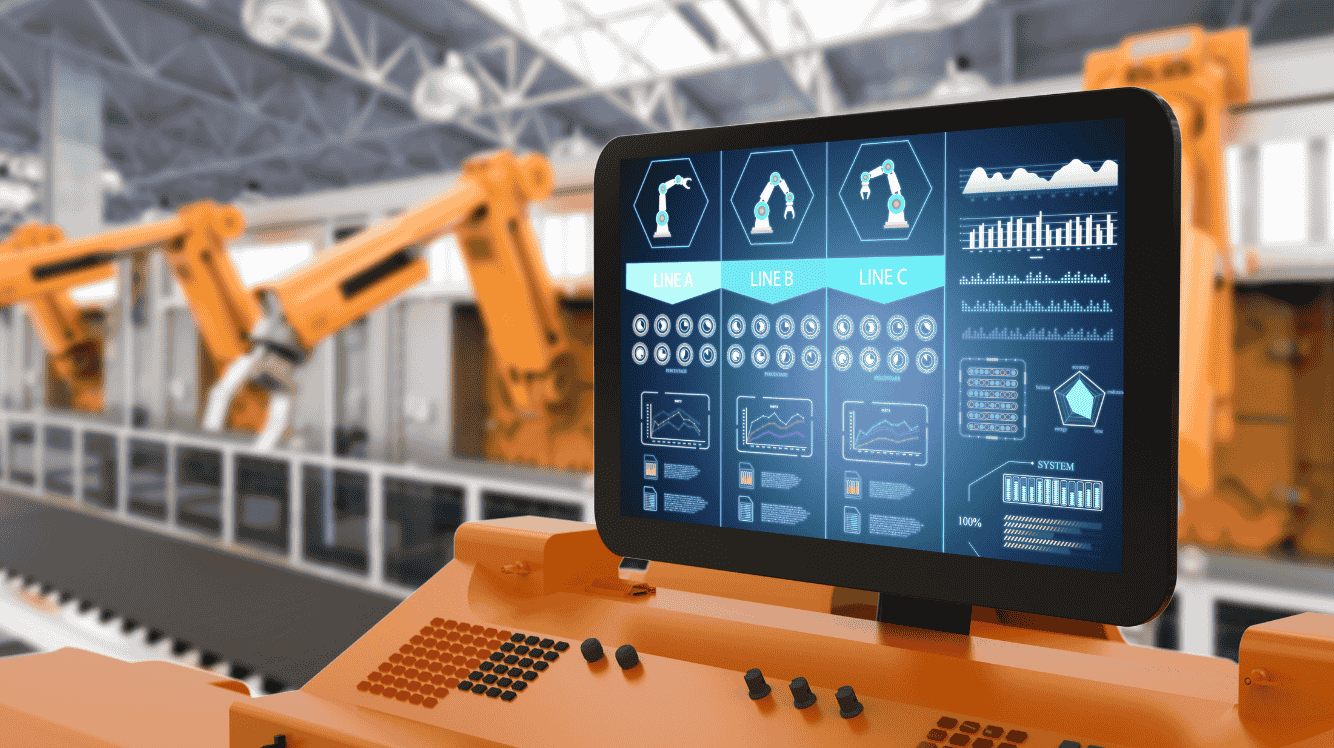
Find out the top 10 ways industrial automation enhances manufacturing with higher productivity, accuracy, and reduced operational costs.
Know More
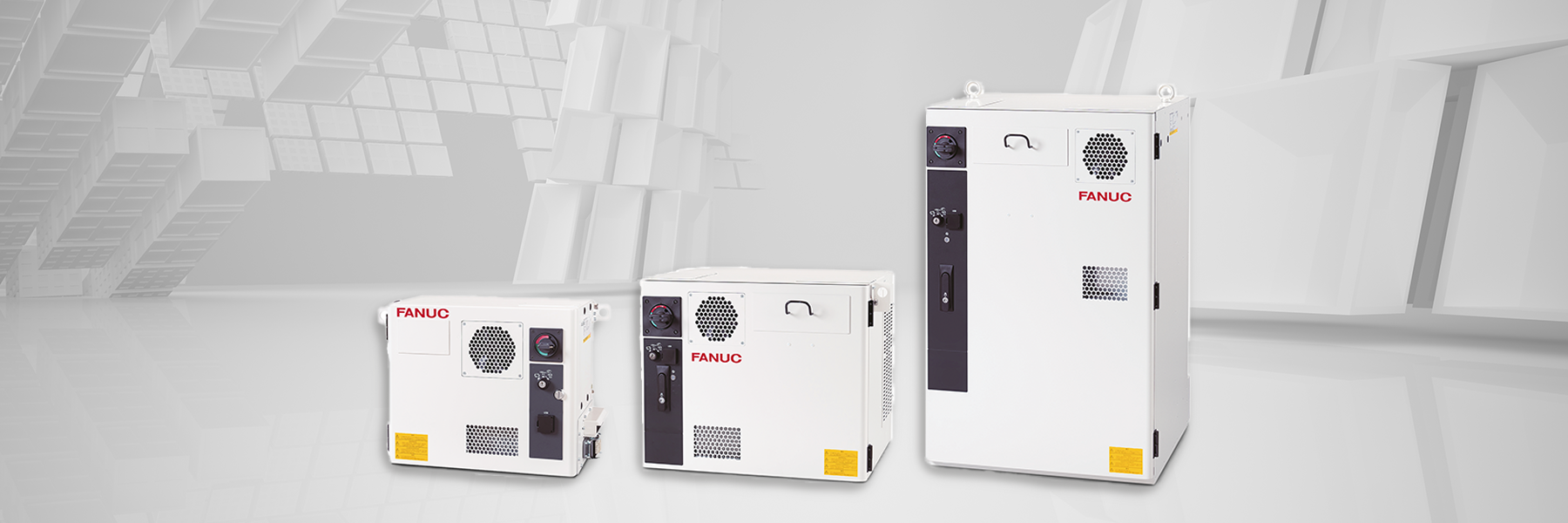
.png)